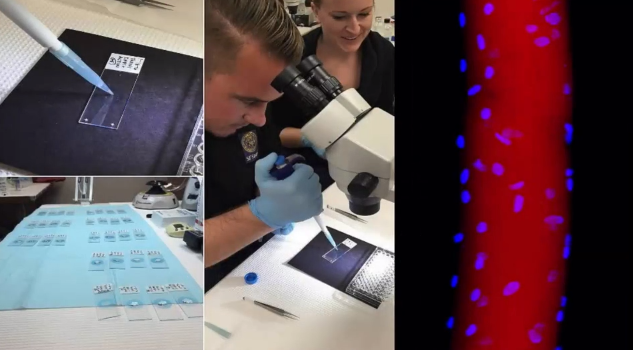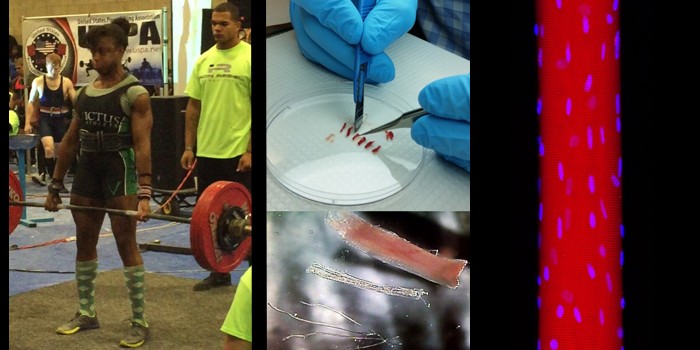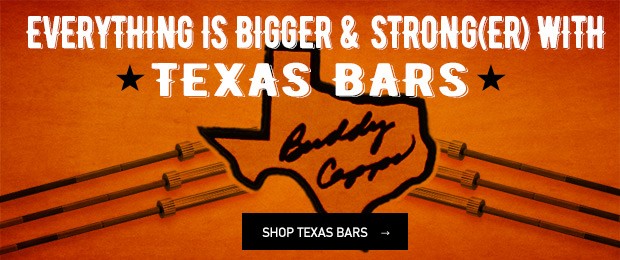
Are you irritated that “sport science” seems to be mostly science, with no sport? I always hear the same comments when people try to read the latest research articles:
- That’s great, but what happens in sport?
- We need to study elite sport!
- I want to know what will happen with my athletes.
- Have these scientists ever lifted or trained hard in their life?
Studying only sedentary, untrained, or “recreationally active” people, rather than high-level performers, is archaic. The stresses that are placed upon the athlete simply being a member of a sport team are high, and being a starter is a stressor in and of itself (T. A. Petrie, 1992; Trent A. Petrie, 1993). Not a single person reading this needs another “study” on how 18-22 year olds (even if they are D1 athletes, as most have little to no real lifting experience) respond to a 6-week program. This is not going to change anything about how a powerlifter should train.
But let’s stop for a second and realize there are walls of problems blocking this type of research from being done: access, communication, experience, and funding.
Access
An excellent relationship between the scientists, athletic/sport coaches, and strength and conditioning coaches is almost unheard of. Coaches want what is best for their athletes. Coaches and athletes also don’t want to risk injury while participating in a study (imagine a projected first round pick or Heisman candidate getting hurt participating in a study). Coaches also may not want to expose an athlete to a different, and maybe more effective, training regimen. Without a prior relationship with the coach or one of their trusted colleagues, or a reputation for results in sport, a coach will most likely not allow a researcher near their athletes. While this may sound counterintuitive, think for a moment. If your entire career focused around your athletes, would you want someone to come in and do something that may potentially harm them, be less effective, or more effective (suggesting the scientist knew more about programming than the strength coach did)? Thus, gaining access to the athletes is extremely difficult.
Communication
Communication refers both to simply being able to get on the same page due to schedules and understanding lingo. In a recent interview on the Pacey Performance Podcast, Jeremy Sheppard referred to himself as multilingual — he spoke English, Canadian, Board Room, and Dude. He was so successful, because he was able to speak with the other staff members, the medical staff, coaching staff, and equipment staff at their own level. He also met the athletes where they were as well.
All too often a researcher gets caught up in their own lingo. They will hand a data sheet to a coach, expecting them to be able to read and interpret it because it seems clear to them. In reality, there is no clarity at all. The coach looks down and sees something in an entirely different language, but the researcher thinks it is crystal clear and the coach is just being difficult to deal with. How well would a researcher be able to look at a playbook and know exactly what to do? If they were to look at a practice plan, would they be able to go and run the practice at the same level and same intensity as the coach? Would they even know what was going on by reading the sheet or playbook? I highly doubt it.
In reality, the coach thinks you are wasting his and his athletes’ time by doing all of these tests and doesn’t know what the outcome and thus value is. Researchers must meet coaches where they are at, not where they think they should be. If you think your intelligence has been insulted or feel talked down to, and someone needs something from you, how likely are you to help that person out again?
Experience
I know coaches that worked with some researchers in the past and stopped. When I asked them why, they said, “we got tired of them wondering what was better on leg curls, 3x6, 3x8, or 3x10, when leg curls aren’t even a big part of our program.” Researchers need to address items that actually matter for performance. Are you studying power clean one rep maxes but the coach just wants a baseball pitcher to increase his pitch velocity? Are you looking at bench press because that’s your interest, when the whole purpose of their training is to run faster? Coach Rohrk Cutchlow at the University of Missouri told me when we met upon his hire, “If it will benefit our athletes and benefits you, then we will do it. It has to have benefit for us to do it, and I don’t want you to do anything that doesn’t benefit you.” As a researcher, what are you giving back to the coaches? Are you giving them back useful information that will improve their program or are you just giving them something you’re interested in? The work has to be meaningful to the coach to be sustainable from their part and the work has to be meaningful to you from your standpoint to make you want to continue working with them.
Funding
Scientists as a whole must consider a broad perspective. Elite athletes comprise .1 to .01% of the population, so from a numbers game, the need to understand how general population responds to training is much more necessary. Government organizations (such as the NIH) will fund studies geared to improving the health of the general population, as it ultimately saves the government money, so they care nothing about elite performance. They have to be careful about what they fund, especially since the research funding sequestered as a result of the 2008 economy collapse has never been restored. The agencies need to make sure that their money goes to what will reach the greatest number of people. They have their goal as improving the health of the general population, not trying to take a fastball from 95 to 96 miles per hour.
While it is true that some professional teams employ sports scientists, most of this research is not disseminated to the public. Those researchers and teams want to maintain their competitive advantage. At the university level, researchers are expected to fully fund things ranging from their equipment to as high as their entire salary, the salary of all of their assistants, and all of their equipment. Sport research is never going to get to the highest level, and in all honesty, most sport research is never going to even fund the equipment.
How We Fix the Problem of Sport Science
There is now a growing sect of professors who have crossed the first three walls. There are professors who have experience as coaches in Division I or professional sport, who have access to athletes and have done some small projects with the staffs already, who have excellent communication skills in the fact that they speak both “researcher” and “coaching” language. What these folks lack is the final wall: funding. Herein lays our dilemma.
People say they want elite level sport science. But do they really? Do they want it bad enough to donate $5, $25, or even $100? Because if they don’t, they need to shut up, because the government is certainly not going to pay for it. And not a scientist in the country is given money by their university to do sport science research. The fourth wall is the majority of what has been holding us back for at least the last five years.
(I say at least the last five, as that is when I got my PhD and started working as faculty. It has been going on long before this though, I assure you).
Dr. Andy Galpin and I have a solution for you. We are both in universities that understand the situation of sport in the fact that we are not required to fully fund our own salary. We are both in universities that don’t require us to only do studies that lead to larger grants. We are in unique positions with our backgrounds working in or with elite level sport: For me, there are the various publications on Division I football, ranging from testing to strength improvement to injury incidence. For Dr. Galpin, please check out his ESPN Sport Science with Connor McGregor.
Check out his recent study, which was the first ever on how using bands changes force, velocity, and power during the deadlift (Galpin et al., 2015). Or see his study of the muscle fiber phenotype of a top 10 UFC fighter. Or the study we just published where we examined the cellular and molecular changes in response to high power short-term overtraining (10x1, 100% back squat 1RM with chains for 14 straight days) compared to high intensity overtraining (10x1, 100% back squat 1RM for 14 straight days).
We have both consistently put out work that has helped to push the field of strength and conditioning with no money. But to keep pushing this field, we need funding. And we need it now. For example, check out the custom deadlift platform and quick release device Dr. Galpin just built to study preloading (what Louie Simmons calls “Static/Dynamic”).
Rather than petitioning to traditional government agencies for funding, we are applying for crowd-sourced funding through www.experiment.com/musclescience. This site is essentially a Kickstarter for scientific research, but is under the Bill Gates umbrella and rigorously reviews and approves all projects it posts. Funded scientists are required to share progress, data, and results directly with the backers. Many articles are published as open-access (free from subscription fees). People who donate are able to track the progress of the study and open view its final results.
Bottom line: We are willing to do the work. We have been turned down by every funding agency—even national organizations dedicated to sports science—for the lack of general population transfer. People are willing to complain that there is no elite sport research and no one researching it. We will do the work, but will you do what’s needed?
But don’t wait. We’ve got less than 20 days to finish this thing, and if we don’t reach full funding, we get $0. If we don’t succeed, we’ll have a hard time justifying the time to put another study and crowd-funding campaign like this again. We’ll go right back to the same old method of doing “sport science.” In other words, your decision to donate today is about more than just this study; it’s about creating a movement. As the old saying goes, are you willing to put your money where your mouth is?
Back This Project
References
- Galpin, A. J., Malyszek, K. K., Davis, K. A., Record, S. M., Brown, L. E., Coburn, J. W., . . . Manolovitz, A. D. (2015). Acute Effects of Elastic Bands on Kinetic Characteristics During the Deadlift at Moderate and Heavy Loads. J Strength Cond Res, 29(12), 3271-3278. doi:10.1519/jsc.0000000000000987
- Petrie, T. A. (1992). Psychosocial antecedents of athletic injury: the effects of life stress and social support on female collegiate gymnasts. Behav Med, 18(3), 127-138. doi:10.1080/08964289.1992.9936963
- Petrie, T. A. (1993). The moderating effects of social support and playing status on the life stress-injury relationship. Journal of Applied Sport Psychology, 5(1), 1-16. doi:10.1080/10413209308411301











